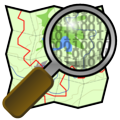Luke Howard: The Namer of Clouds
As a young boy growing up in England, Luke Howard (1773-1864) attended grammar school at Burford, a village to the west of London. But Luke was more interested in the books about nature than in volumes of the Greek and Latin classics.
During Luke Howard's school years, high levels of dust from volcanic eruptions in Iceland and Japan caused the sky to have a dazzling appearance. Luke Howard was amazed by the clouds and complicated patterns within them. For him, it made more sense that clouds had properties.
Before 1800, most scientists felt that clouds were just there and that they had no specific groups. With few exceptions, no cloud types were even named; they were just described by their color and form as each individual saw them: dark, white, gray, black, mare's tails, wooly, etc. Sometimes, clouds were used as weather forecasting tools, but mainly by their state of darkness.
This was probably because the nature of the atmosphere itself was still being researched and attempts were made at understanding it.
When he was about 20, Luke Howard returned to London to work as a pharmacist. As a hobby, he joined a group of scientists who called themselves the Askesian Society.
During the winter of 1802, Luke Howard presented a paper to the Askesian Society entitled "On the Modification of Clouds" (in modern English, modification means classification.) Mr. Howard proposed that clouds could be categorized into several simple categories. Luke Howard created Latin names for his categories, and therefore made it usable in any country. Luke Howard proposed that clouds were in three distinct categories. They were:
÷Cumulus
(Latin for heap)
÷Stratus
(Latin for layer)
÷Cirrus
(Latin for curl of hair)
The paper was liked so well by the Askesians that...


